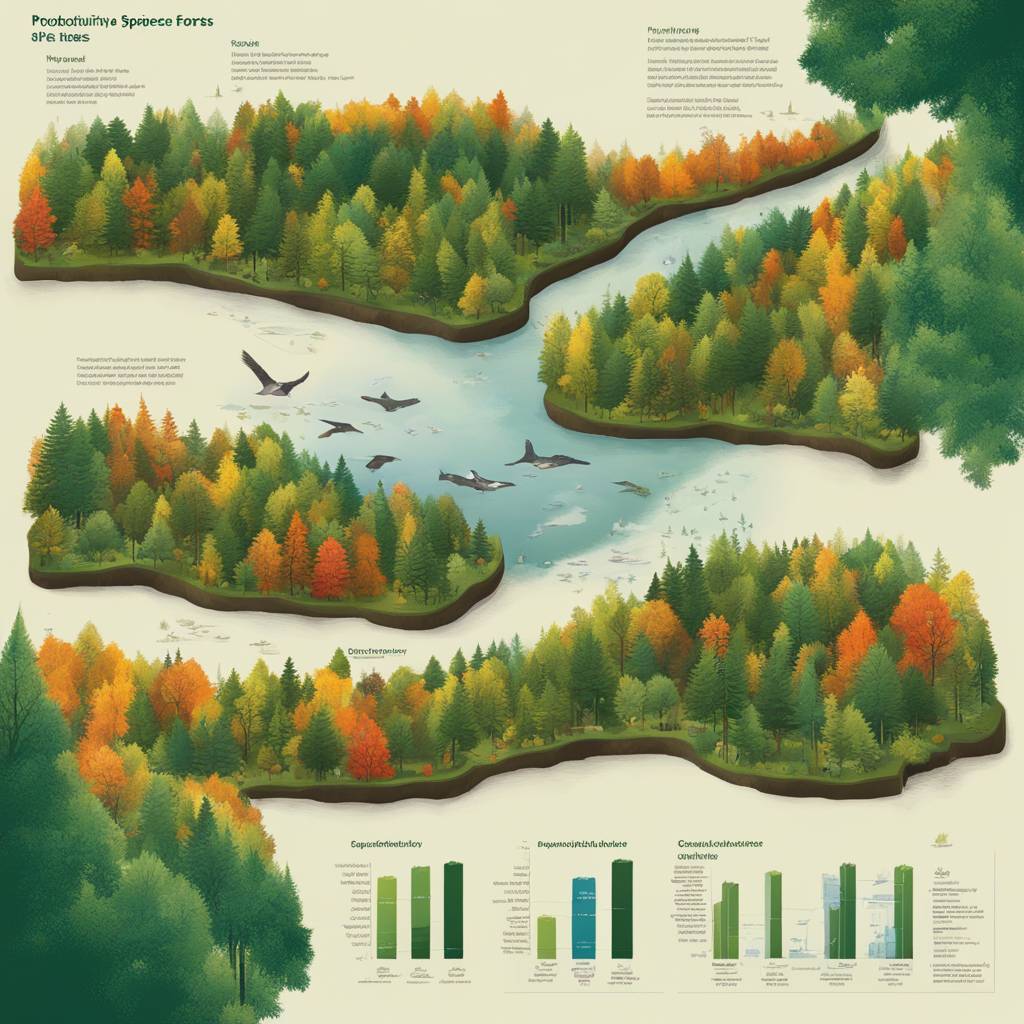In a new study published in the Proceedings of the National Academy of Sciences, researchers analyzed 20-years’ worth of data to determine the best way to measure the productivity of a forest in relation to biodiversity. They found that the simplest measure of biodiversity, namely counting the number of species in a given area, was the most effective way to assess forest productivity. This conclusion was drawn from analyzing nearly two million tree measurements from over 23,000 forest plots across the eastern United States.
The study compared three different measures of biodiversity – species richness, phylogenetic diversity, and functional diversity – in relation to forest productivity. The researchers found that a greater number of tree species, or species richness, consistently resulted in a more productive forest. This was not surprising, as the interaction between multiple species creates robust ecosystem services such as carbon storage, wildlife habitat, and resources like wood that can be harvested and regenerated. However, measures of relatedness (phylogenetic diversity) and various structural and chemical differences (functional diversity) were negatively correlated with productivity.
Phylogenetic diversity measures how closely related species are to each other, while functional diversity assesses the variety in sizes, shapes, and biological processes of organisms. Both of these measures are important for determining a forest’s resilience to change, but their relationship with productivity was found to be negative. The researchers noted that there may not be enough information about traits such as root structure and depth to accurately assess the impact of phylogenetic and functional diversity on forest productivity.
Despite some conflicting results, the number of species in a forest remains the best proxy for its health and productivity. It also provides a practical guide for those working to restore degraded ecosystems, as increasing species richness can help improve ecosystem services. The findings of this study are important for the proper management of forests, as they play a significant role in balancing carbon emissions caused by human activity and are among the most threatened ecosystems on Earth.
Having a better understanding of diversity is essential for making informed conservation decisions and ensuring the long-term health of forests. The researchers emphasized the importance of using species richness as a reliable and easy-to-use measure of biodiversity in conservation efforts, particularly when faced with limited data and time constraints. Overall, the study highlights the need for further research to unravel the complexities of biodiversity and its impact on forest productivity and resilience.













